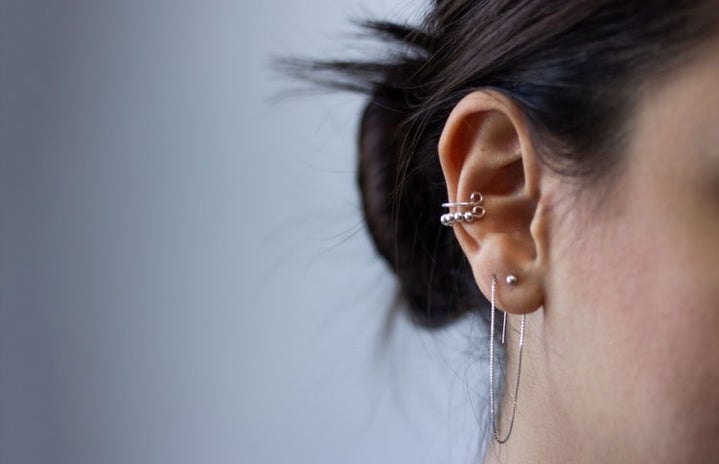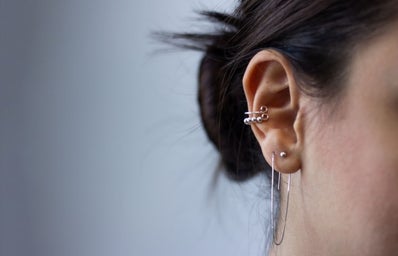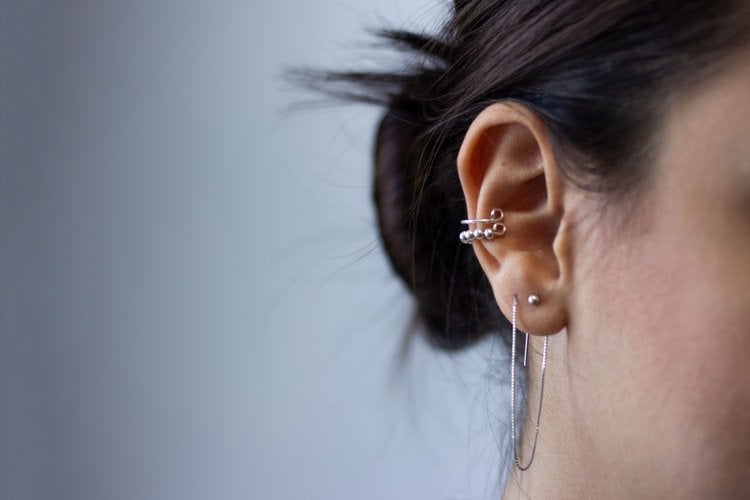Ready to update your look? A new piercing is a body modification that is very versatile to fit your mood and style. So here is all the must-know information about getting a new piercing.
Which piercing?
The most fun part is deciding which piercing you would like. With ear piercings, there are plenty of styles to choose from, ranging from lobe piercings to cartilage piercings such as helix or conch. Sometimes, it is a good idea to have an idea about the combination of piercings you would like, for example, some people place their ear piercings into the pattern of a constellation. Yet sometimes it is fun to be spontaneous too!
An additional factor to consider is the healing time for your piercing, for example, a piercing in an area of mainly skin such as the ear lobe or belly button will only take around six weeks, whereas nose piercings can take up to four months!
Building on this, you will need to consider the activities you will be doing during the healing time. As much as we’d like to live in a world where body modifications don’t affect people’s perceptions of professionalism, in reality, there is still a long way to go. So if you have that important job interview where you think there’s a possibility that you may be judged for wearing facial piercings, maybe hold off until you can comfortably wait for them to heal.
Getting the piercing!
Research, research, research! Whilst many people who grew up in the UK have memories of going to Claire’s to get our first lobe piercings done with a piercing gun, specialist piercing places are a wiser choice for other piercings such as cartilage and face. Whilst getting the piercing is meant to be fun, it is important to remember that it is a body modification so finding a place with high standards of hygiene that will talk you through the cleaning and healing process is key. Therefore, ask friends for recommendations, check the reviews of the piercing place before you go, and check photos to see if the space is sanitary.
Additionally, check the technique of the piercer. Whilst some places may use a piercing gun for ear piercings, it is not recommended practice, especially for the cartilage as there is a risk that it could shatter from the force of the gun (sounds incredibly painful and not ideal). Therefore, if possible check that the piercing is undertaken using a needle that is far more controlled and accurate.
The next decision is on the trip itself! Go as a group or alone? I personally like to have company during my piercing as I talk endlessly when nervous (and would rather annoy my friends than the piercer), but going alone is great for a spontaneous piercing with no distractions. Whichever you decide, make sure you go on a full stomach and don’t have any alcohol as that thins your blood (no Dutch courage this time!).
AFTERCARE
Aftercare for your piercing is key, keeping the piercing clean and avoiding touching it is important to avoid infection and speed up the healing process. Whilst you can make your own saline solution using sea salt and boiled water, there is a risk of not getting the proportions of salt to water correct and either not making the solution saline enough, or using too much salt which can dry out the piercing. From my own experience, I would recommend using a saline spray, as this is premixed to the correct salt balance and prevents you from having to touch the piercing at all. Any signs of extreme redness, pain, or bumps make sure you contact your GP.
So there you have it! With the proper care, a new piercing will heal quickly and you’ll be able to move on to choosing the new jewellery. Happy piercing!



